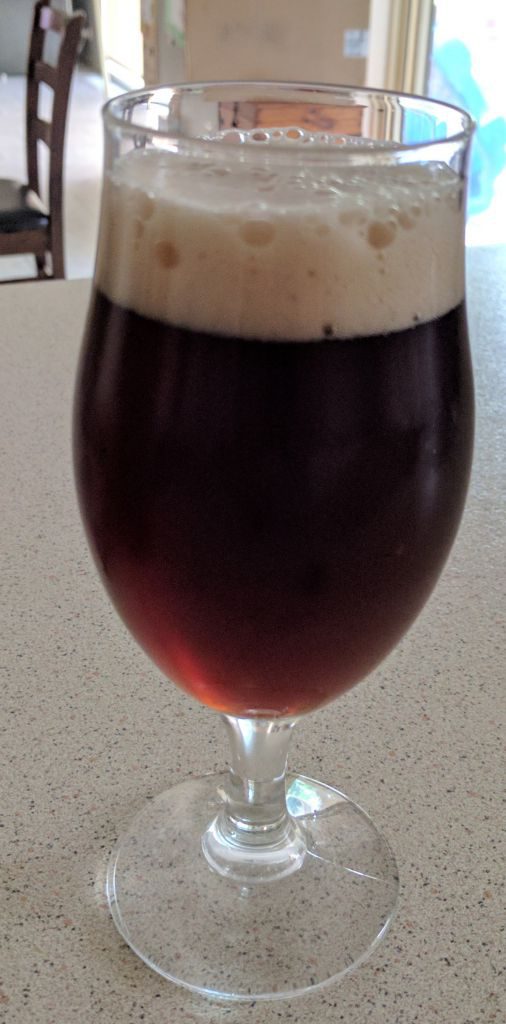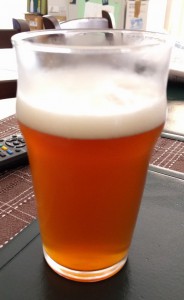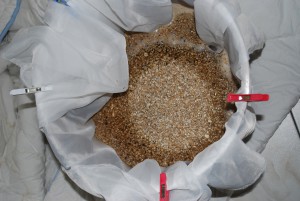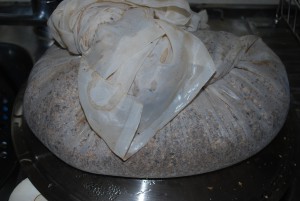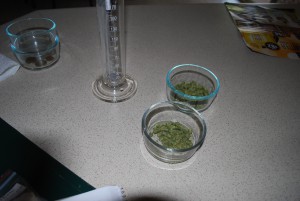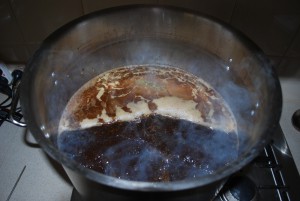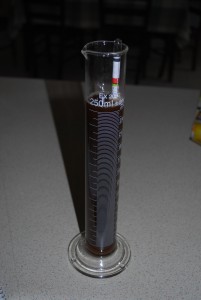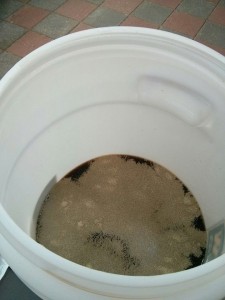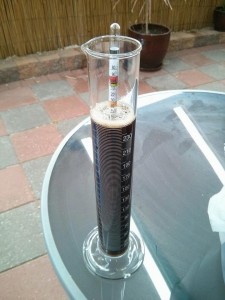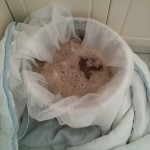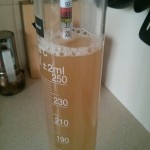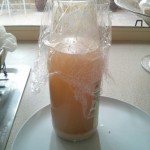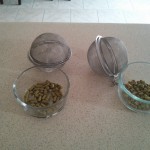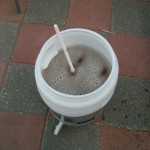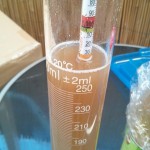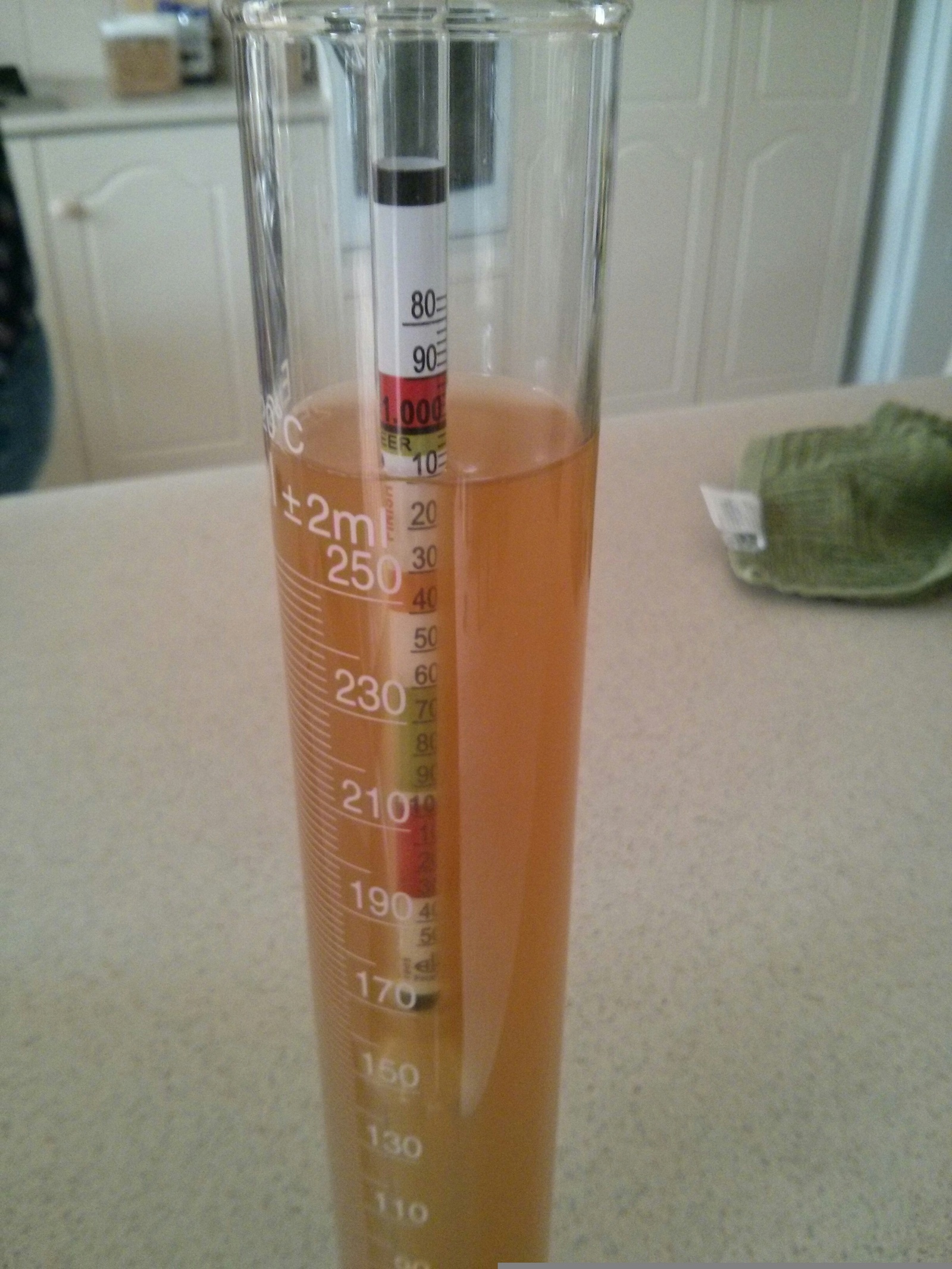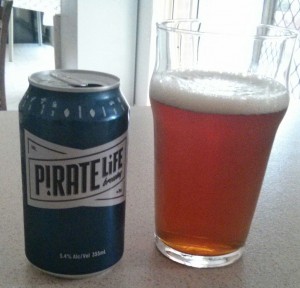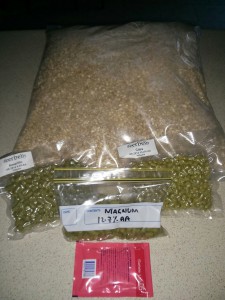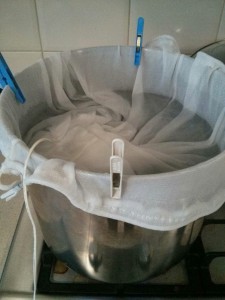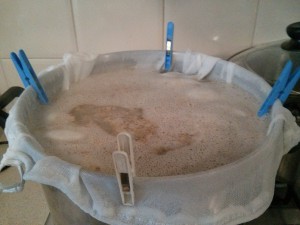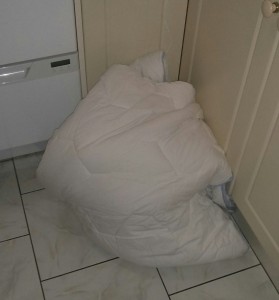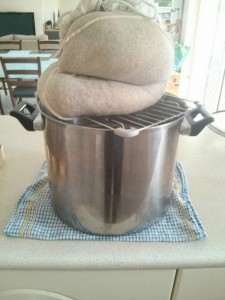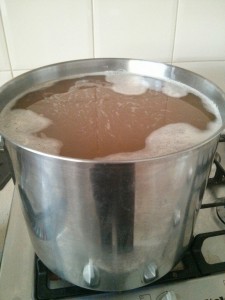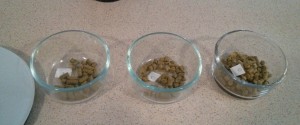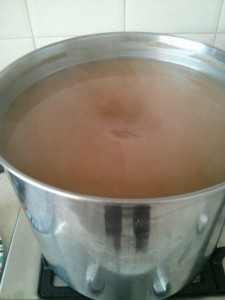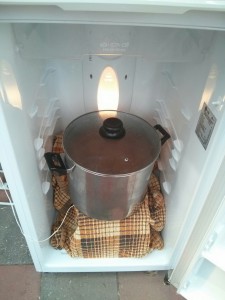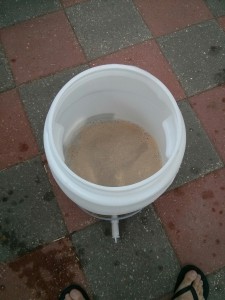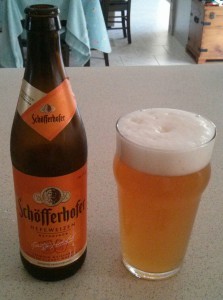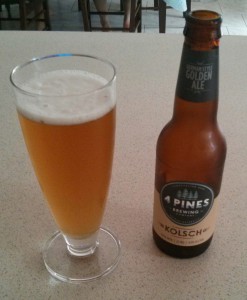With summer coming to an end I am looking for a darker winter beer to drink that is an easy quaff. Sticking with my recent history of German styles I bought a couple of commercial Dunkels and liked what I tasted. So Dunkel it is. The Dunkel is a dark, transparent lager brewed with darker Munich malts and sometimes some pilsner malt. It is supposed to have a sweeter dark malt profile with a moderate spicy hop aroma. I surfed around various beer recipe sites before settling on a simple recipe that I thought would suit my palate. I adapted the recipe using the trusty BIAB recipe spreadsheet tweaking it for my usual no chill / 30 minute technique.
13 February 2017
Munich Dunkel
12.5L BIAB
1.052OG
1.014FG
44.3BC
18.6IBU
Munich 1 Malt 1.4kg (11.29EBC)
Pilsner Malt 1.4kg (4.56EBC)
CaraAmber 0.25kg (9.96EBC)
Carafa 2 0.1kg (35.15EBC)
Pitch onto Fermentis SAFLAGER 34/70 yeast cake from a previous Bohemian Pilsner brew.
15L strike water at 72C with 69C target mash temp. Stir every 20 minutes of mash. The temperature at the start of the mash was 67.6C and at the end of the mash the temperature was 65.2C. At that point I squeezed the bag and sparged it with 4L of cold water. This resulted in 17.5L of pre-boil wort with an SG of 1.036 at 50C. Temperature corrected to 1.045.
30 minute boil
6g Nugget 15.5%AA @ 30 minutes
20g Saaz 4.4%AA @ 10 minutes
1/4 of a Whirlfloc tablet @ 10 minutes.
This hop schedule gave a projected bitterness right at the bottom limit of the style. Because I no chill I’ve perceived that a lot of my beers have been too bitter even when counting flameout and 5 minute additions as 10 minute additions. So when devising this recipe I used those allowances AND aimed for IBU’s at the bottom limit of the style hoping it would end up right on target.
As usual when the boil was done I stuck the whole pot in a my fermentation fridge and allowed it to get the wort down to 12.5C. The next day when it was at the correct temperature I tipped the lot onto the yeast cake of my last brew and aerated it vigorously with my giant brew spoon. Original gravity was finalised at 1.050. There was 14.5L of wort in the fermenter. I’ll be using the usual fast lagering method for this beer before bulk priming and bottling.
Fermentation Log
14-2-17 – Into fridge at 12C
27-2-17 – ramp temp up to 20C over three days
2-3-17 – Cold crash to 3C
4-3-17 – Bottle with 130g of priming sugar to get 18.5 740mL bottles. FG measured at 1.019 which was too high. Perhaps due to not leaving at 20C long enough?
Tasting
Well I couldn’t wait with this one and opened a bottle just 8 days after bottling and surprisingly it was reasonably carbonated and poured fairly clear. It had a lovely creamy tan head which didn’t hang around too long most likely due to it not being in the bottle long enough. It was super easy to drink and very toasty with just a hint of the dark malt burnt flavor which is not really appropriate for the style. To my palate the bitterness was spot on and it went down just a bit too quickly! I don’t see this brew hanging around too long and can’t wait to try it again to iron out a couple of wrinkles in the process and perhaps tone down the impact of the Carafa 2 specialty malt a little bit.

